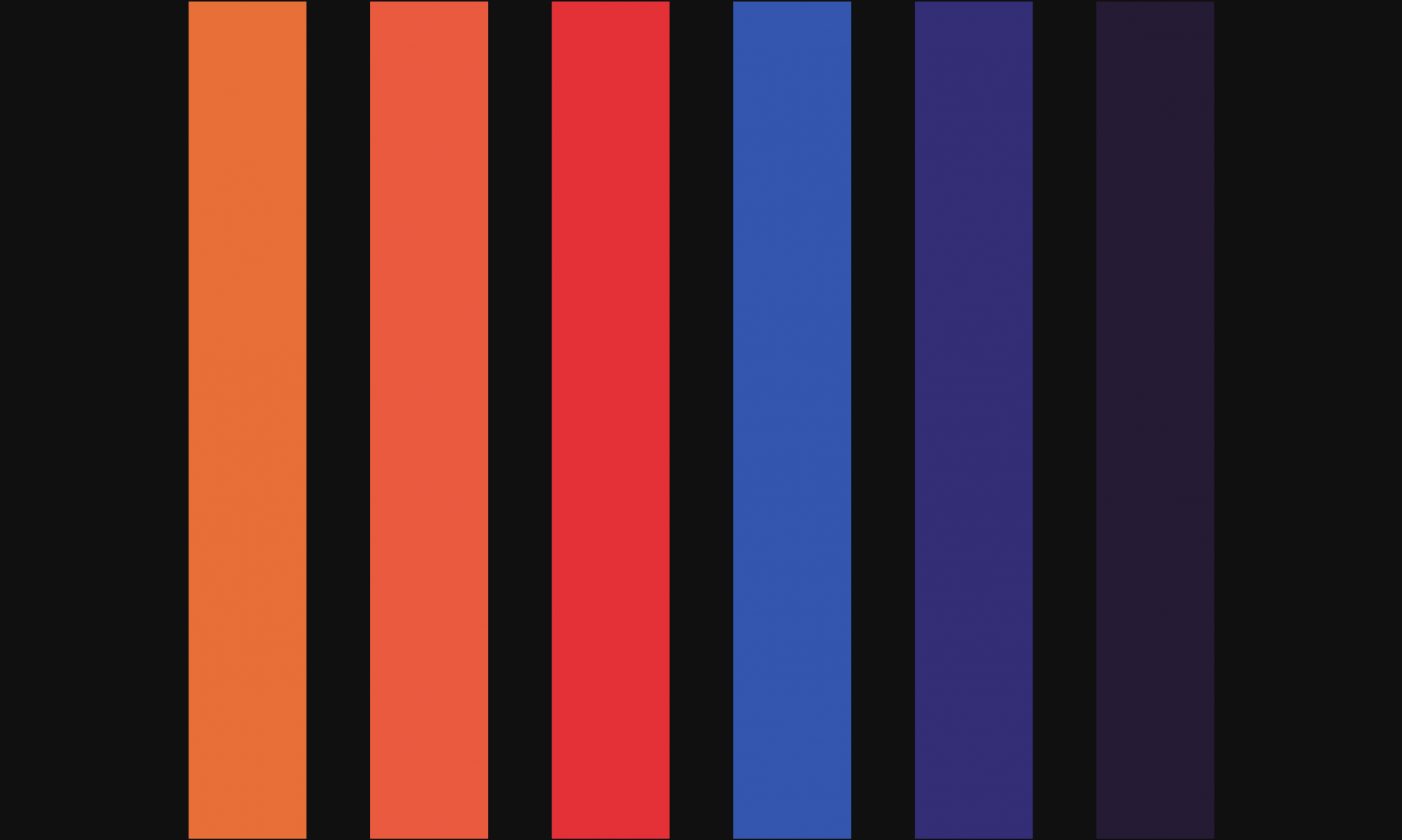The Research Approach
The research approach to this project has been based on ‘design for policy’, an emerging yet growing field of research and practice, that utilises design tools and methods to provide new understandings of policy issues while co-developing interventions with diverse actors affected by those same policy issues1. Core to the design for policy approach is capturing insights and developing situated understandings of socio-cultural and economic problems. In this way, the actions oriented to strengthening a particular sector or community are largely based on the protagonists’ understanding of their issues and knowledge about potential solutions. To navigate the particularities of the creative community in HW/FI and the QEOP, a four-phase model was developed.

This model visualises the different stages in the research project while emphasising their iterative nature. Each of these phases implies different levels of immersion within the creative community, as well as actions and expected outputs.
Phase 1 – Elicit: September to November 2020.
This first phase included the familiarisation with existing and current literature (journal articles, reports, blogs) on the impact of Covid-19 in the Creative Industries (CI) in general, and the characteristics of the area of interest. Likewise, it looked at the pre-immersion of the researchers in the community by participating in diverse activities and forums. Interviews with a range of diverse actors were conducted at this stage. Moreover, an online group discussion with several actors was also organised in early November. From these activities a number of themes were elicited.
Phase 2 – Design Future: December 2020 to February 2021.
In its second phase, and through a series of activities2 involving actors in HW/FI and the QEOP, the research will look at developing shared future visions of the creative community moving into 2021 and beyond.
Phase 3 – Design Interventions: March to May 2021.
The research’s third phase involves the co-design of potential interventions and support mechanisms that could facilitate the realisation of the preferred futures envisioned in the previous phase. To achieve this, a series of activities including co-creative workshops with diverse actors of the creative communities in HW/FI and the QEOP, and policymakers and representatives of the local authorities (LLDC, LBH, LBTH, LBN) will take place.
Phase 4 – Prototyping: May to June 2021.
The fourth and last phase implies the validation of the interventions developed in the previous phase. This will be carried out by implementing a series of prototypes that test the assumptions on which the interventions are based and inquiry on the validity of the proposed solutions to help in developing preferred futures for the creative communities within HW/FI and the QEOP.
1Whicher, A. (2020). AHRC Design Fellows Challenges of the Future: Public Policy.
2The first ‘design future’ activity was planned to take place in the form of a design and foresight workshop in a Covid-secure venue in Hackney Wick in December 2020. From this activity, a series of future scenarios were expected to be developed to help guide the conversation around potential policy interventions. Unfortunately, this activity had to be postponed due to new restrictions in the face of London moving into Tier 3.

